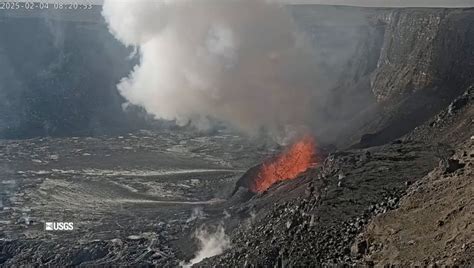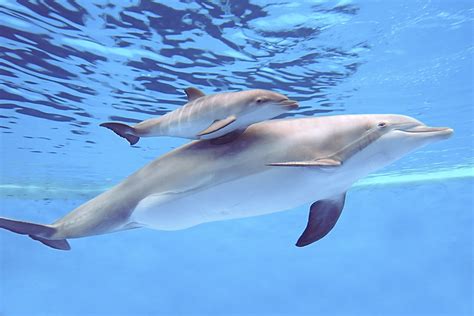
Kilauea volcano on Hawaii’s Big Island erupted Sunday, sending lava fountains soaring into the sky within Halemaʻumaʻu crater at the summit, according to the U.S. Geological Survey. The eruption, which began at approximately 11:15 a.m. HST, is confined to the crater and poses no immediate threat to nearby communities.
The Hawaiian Volcano Observatory (HVO) reported that the eruption commenced after a period of increased seismic activity and changes in ground deformation. “The eruption at Kilauea’s summit is occurring within a closed area of Hawaii Volcanoes National Park,” the USGS stated in its initial assessment. “Elevated volcanic gas emissions are expected.” The HVO is closely monitoring the eruption and will provide regular updates.
Eruption Details and Observations
The eruption is characterized by fissures opening on the floor of Halemaʻumaʻu crater, feeding lava fountains that are spattering onto the crater floor and creating a new lava lake. The lava lake’s surface is constantly changing as molten rock rises and cools, creating a dynamic spectacle. Webcams operated by the USGS provide real-time views of the eruption, allowing scientists and the public to observe the activity from a safe distance.
Scientists are analyzing the lava composition and gas emissions to better understand the eruption’s dynamics and potential hazards. Sulfur dioxide (SO2) emissions are elevated, and vog (volcanic smog) may affect downwind areas. The USGS advises individuals with respiratory sensitivities to take precautions to minimize exposure.
The eruption is a reminder of Kilauea’s ongoing volcanic activity. Kilauea is one of the world’s most active volcanoes and has been erupting almost continuously for decades. The most recent significant eruption occurred in 2018, when a series of fissures opened in the lower East Rift Zone, destroying hundreds of homes and altering the landscape dramatically.
Geological Context and Historical Activity
Kilauea is a shield volcano, characterized by its broad, gently sloping shape formed by the accumulation of basaltic lava flows. It is located on the southeastern flank of Mauna Loa, the largest volcano on Earth. Kilauea’s volcanic activity is driven by a hotspot beneath the Pacific Plate, which supplies magma to the volcano’s summit and rift zones.
The volcano has a long history of eruptions, dating back tens of thousands of years. In recent centuries, Kilauea has been particularly active, with frequent eruptions from its summit and rift zones. The Puʻuʻōʻō eruption, which lasted from 1983 to 2018, was one of the longest and most voluminous eruptions in Kilauea’s recorded history. It produced lava flows that covered vast areas of land and added new coastline to the island.
The 2018 eruption was a major event that significantly impacted the Puna district of the Big Island. Fissures opened in residential areas, releasing lava and toxic gases. Thousands of residents were evacuated, and hundreds of homes were destroyed. The eruption also caused widespread damage to infrastructure, including roads, power lines, and water systems.
Since the end of the 2018 eruption, Kilauea has experienced several smaller eruptions, all confined to Halemaʻumaʻu crater. These eruptions have helped to refill the crater, which had been significantly depleted during the 2018 event. The current eruption is the latest in this series of summit eruptions.
Volcanic Hazards and Safety Information
Volcanic eruptions can pose a variety of hazards, including lava flows, ashfall, volcanic gases, and explosions. Lava flows are the most obvious hazard, as they can destroy everything in their path. Ashfall can disrupt air travel, damage infrastructure, and cause respiratory problems. Volcanic gases, such as sulfur dioxide, can be harmful to human health. Explosions can occur when magma interacts with water or groundwater, creating powerful blasts that can send rocks and debris flying through the air.
The USGS and Hawaii Volcanoes National Park provide information to the public about volcanic hazards and safety precautions. It is important to stay informed about the latest volcanic activity and to follow the instructions of authorities.
During an eruption, it is important to avoid areas downwind of the volcano, as volcanic gases and ash can be carried by the wind. Individuals with respiratory problems should take extra precautions to minimize exposure. It is also important to be aware of the potential for lava flows and to avoid areas that could be affected.
Hawaii Volcanoes National Park remains open, but certain areas may be closed due to volcanic hazards. Visitors should check the park’s website for the latest information and advisories. It is also important to respect the cultural significance of the volcano and to avoid disturbing any archaeological sites.
The eruption provides a unique opportunity for scientists to study volcanic processes and to learn more about the dynamics of Kilauea. The data collected during the eruption will help to improve our understanding of volcanic hazards and to better prepare for future eruptions.
Economic and Social Impacts
Volcanic eruptions can have significant economic and social impacts on communities. The 2018 eruption in Kilauea caused widespread damage to infrastructure, disrupted tourism, and displaced thousands of residents. The recovery from the eruption has been a long and challenging process.
Tourism is a major industry in Hawaii, and volcanic eruptions can have both positive and negative impacts on tourism. While some tourists may be deterred by the potential for volcanic hazards, others are drawn to the spectacle of an eruption. Hawaii Volcanoes National Park is a popular destination for visitors who want to see volcanic activity firsthand.
The local communities of the Big Island have a deep connection to Kilauea. The volcano is considered sacred in Hawaiian culture, and eruptions are seen as a natural part of the island’s life cycle. The people of Hawaii have learned to live with volcanic activity and to adapt to the challenges it presents.
Ongoing Monitoring and Research
The USGS and HVO are continuously monitoring Kilauea for signs of volcanic activity. They use a variety of tools and techniques, including seismometers, GPS instruments, gas sensors, and webcams. These instruments provide valuable data that help scientists to track changes in the volcano’s behavior and to forecast future eruptions.
Scientists are also conducting research to better understand the processes that drive volcanic activity at Kilauea. This research includes studies of the volcano’s magma system, the composition of its lavas, and the dynamics of its eruptions. The goal of this research is to improve our ability to predict volcanic hazards and to protect communities from the impacts of eruptions.
The ongoing monitoring and research efforts are essential for ensuring the safety of the people of Hawaii and for advancing our understanding of volcanic processes. Kilauea is a dynamic and complex volcano, and it will continue to be a subject of intense scientific scrutiny for many years to come.
Details on Volcanic Gas Emissions
One of the key concerns during the Kilauea eruption is the emission of volcanic gases, particularly sulfur dioxide (SO2). SO2 is a colorless gas with a pungent odor that can cause respiratory irritation and other health problems. When SO2 is released into the atmosphere, it can react with other substances to form vog, a hazy mixture of sulfur dioxide gas, aerosols, and other particles.
Vog can affect air quality over a wide area, even hundreds of miles downwind from the volcano. Individuals with asthma, bronchitis, or other respiratory conditions are particularly susceptible to the effects of vog. Symptoms of vog exposure can include coughing, wheezing, shortness of breath, and chest tightness.
The USGS and Hawaii Department of Health monitor SO2 levels and vog conditions and provide advisories to the public. Individuals who are sensitive to vog should take precautions to minimize exposure, such as staying indoors with windows closed, using air conditioning, and avoiding strenuous activity outdoors.
Lava Composition and Flow Characteristics
The lava erupted from Kilauea is primarily basalt, a dark-colored, fine-grained volcanic rock. Basaltic lava is relatively fluid and can flow easily over long distances. The viscosity of lava depends on its temperature and composition. Higher temperatures and lower silica content result in more fluid lava.
Kilauea’s lava flows typically advance at speeds ranging from a few feet per hour to several miles per hour. However, under certain conditions, lava flows can move much faster. For example, in 2018, some lava flows in the lower East Rift Zone advanced at speeds of up to 100 feet per minute.
The surface of a lava flow can be either smooth and ropy (pahoehoe) or rough and blocky (aʻā). Pahoehoe lava is typically more fluid and forms smooth, undulating surfaces. Aʻā lava is more viscous and forms jagged, broken surfaces.
The Cultural Significance of Kilauea
Kilauea holds a profound cultural significance for the Native Hawaiian people. It is considered the home of Pele, the Hawaiian goddess of volcanoes and fire. Pele is a powerful and revered figure in Hawaiian mythology, and eruptions are seen as manifestations of her presence and power.
Traditional Hawaiian practices and beliefs are closely intertwined with the volcanic landscape. Offerings are often made to Pele at the summit of Kilauea, and traditional chants and dances are performed to honor her. The volcano is also considered a source of life and renewal, as volcanic eruptions create new land and resources.
The 2018 eruption had a particularly profound impact on the Native Hawaiian community. The eruption destroyed many sacred sites and cultural resources. However, it also reaffirmed the importance of Kilauea in Hawaiian culture and the resilience of the Hawaiian people.
Impact on Hawaii Volcanoes National Park
Hawaii Volcanoes National Park is a major attraction on the Big Island of Hawaii, drawing visitors from around the world to witness the power and beauty of Kilauea and Mauna Loa volcanoes. The park encompasses a diverse range of volcanic landscapes, including craters, lava flows, rainforests, and coastlines.
The eruption is centered within the park, specifically in Halemaʻumaʻu crater. While the eruption is contained within the crater, park officials are closely monitoring the situation and implementing safety measures to protect visitors and staff. Certain areas of the park may be closed due to volcanic hazards, such as elevated gas emissions and the potential for explosions.
The park’s website provides updated information on closures and advisories. Visitors are encouraged to check the website before visiting the park and to follow the instructions of park rangers.
The eruption also offers a unique opportunity for visitors to witness volcanic activity firsthand. The overlook at Uēkahuna provides a safe vantage point for viewing the lava fountains and the lava lake. The park also offers ranger-led programs and guided tours that provide information about the volcano and its hazards.
Future Eruptions and Long-Term Outlook
Kilauea is expected to continue erupting in the future. The volcano has been erupting almost continuously for decades, and there is no indication that this period of activity is coming to an end. Future eruptions could occur from the summit or from the rift zones.
Scientists are working to improve their ability to forecast future eruptions. This includes studying the volcano’s magma system, analyzing its past eruptions, and developing computer models that simulate volcanic processes. The goal is to provide timely warnings to communities that could be affected by future eruptions.
The long-term outlook for Kilauea is uncertain. The volcano could continue to erupt for many years to come, or it could enter a period of quiescence. The future course of Kilauea’s activity will depend on a variety of factors, including the supply of magma to the volcano, the stability of its plumbing system, and the interactions between magma and groundwater.
The recent eruption serves as a reminder of the dynamic nature of volcanoes and the importance of being prepared for volcanic hazards. The people of Hawaii have learned to live with volcanic activity and to adapt to the challenges it presents. With ongoing monitoring, research, and education, we can continue to mitigate the risks posed by volcanoes and to appreciate their power and beauty.
FAQ: Kilauea Volcano Eruption
1. Is the Kilauea eruption dangerous to residents? Currently, the eruption is confined to Halemaʻumaʻu crater within Hawaii Volcanoes National Park and poses no immediate threat to nearby communities. However, elevated volcanic gas emissions, particularly sulfur dioxide (SO2), are expected, and vog (volcanic smog) may affect downwind areas. Individuals with respiratory sensitivities should take precautions to minimize exposure.
2. Where is the best and safest place to view the eruption? The overlook at Uēkahuna in Hawaii Volcanoes National Park provides a safe vantage point for viewing the lava fountains and lava lake. However, it’s essential to check the park’s website for the latest information on closures and advisories before visiting. Always follow the instructions of park rangers.
3. What kind of lava is being erupted from Kilauea? The lava being erupted is primarily basalt, which is a dark-colored, fine-grained volcanic rock. This type of lava is relatively fluid and can flow easily over long distances.
4. How long will this eruption last? It is impossible to predict the exact duration of the eruption. Kilauea has been erupting almost continuously for decades. Future eruptions could occur from the summit or from the rift zones, and the duration will depend on various factors, including magma supply and the volcano’s plumbing system.
5. What is the cultural significance of Kilauea to the Native Hawaiian people? Kilauea holds profound cultural significance for Native Hawaiians. It is considered the home of Pele, the Hawaiian goddess of volcanoes and fire, a powerful and revered figure in Hawaiian mythology. Eruptions are seen as manifestations of her presence and power, and traditional practices and beliefs are closely intertwined with the volcanic landscape.
Additional Information and Context
The eruption of Kilauea is not an isolated event but part of a broader pattern of volcanic activity in Hawaii. The Hawaiian Islands are formed by a hotspot, a plume of hot mantle material that rises beneath the Pacific Plate. As the plate moves over the hotspot, volcanoes are formed. Kilauea is one of the most active volcanoes in the Hawaiian chain.
The study of Kilauea’s eruptions provides valuable insights into the workings of volcanoes around the world. By monitoring the volcano’s activity and analyzing its lavas and gases, scientists can learn more about the processes that drive volcanic eruptions and develop better methods for forecasting and mitigating volcanic hazards. The data gathered also contributes significantly to understanding the Earth’s internal processes and geological evolution.
The eruption also highlights the complex relationship between humans and volcanoes. While volcanic eruptions can pose significant risks to communities, they also create new land and resources and are a source of fascination and wonder. The challenge is to learn how to live safely with volcanoes and to appreciate their power and beauty.
The U.S. Geological Survey, through its Hawaiian Volcano Observatory, plays a crucial role in monitoring and researching Kilauea. The HVO is staffed by a team of scientists who are dedicated to understanding the volcano and providing timely information to the public. The HVO’s work is essential for protecting the people of Hawaii from the hazards of volcanic eruptions.
The eruption also underscores the importance of preparedness. Communities that are located near volcanoes need to have emergency plans in place and to be prepared to evacuate if necessary. It is also important to educate the public about volcanic hazards and to provide them with the information they need to stay safe.
The ongoing eruption of Kilauea is a reminder of the dynamic nature of our planet and the forces that shape it. By studying volcanoes and learning from their eruptions, we can gain a better understanding of the Earth and its processes.









